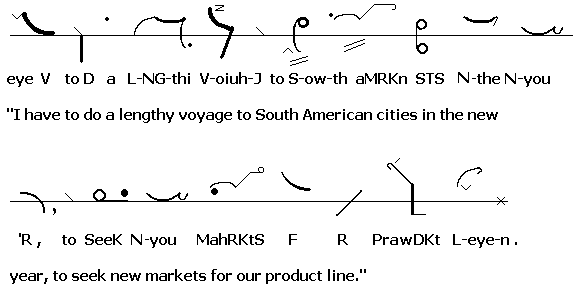Some General Aspects of
the Syllabics Orthography
©Chris Harvey 2003
Contents
Origins
The Nature of Syllabics
Accuracy
Ease of Learning
Standardisation
Appropriateness
Sources
Origins
Depending on whose story you choose to believe, the original Syllabary used by several Aboriginal languages in Canada was invented by either the missionary James Evans or by the Native Peoples themselves who upon meeting Evans explained the orthography to him. I have not seen any examples of Syllabics before Evans’ time in southern Ontario, so I cannot personally vouch for the Native origin of the orthography. In all likelyhood, Syllabics arose from the collaboration of Cree speakers with Evans. The phonological match between even the earliest Syllabics texts with the language is very precise and is probably not the work of Evans alone; it would have required detailed knowledge of the language that only the most sophisticated of the Elders would have understood fully.
The oral tradition of several Plains Cree First Nations tells of syllabics being adopted not from missionaries but from some other indigenous tradition (often Blackfoot). There is, in truth, no contradiction between Evans’ development of the script and its diffusion via Native groups heading east to west. In fact, some missionary accounts report that, upon arriving in Stoney country for the first time, the people living there were already literate in Cree syllabics. It seems then, that while Cree Syllabics were developed by James Evans at Norway House, Manitoba, their subsequent spread over the Canadian west was an indigenous accomplishment.
Before moving to Manitoba, Evans was first working on the Ojibway language in Ontario where the sources say he developed a syllabary for that language. It turns out that this syllabary is only a list of the possible syllables in the language using a Latin-based orthography. It is not a preliminary stage to the syllabary he used for Cree. Such syllabaria were common in Native language prayer books in the nineteenth century. McDonald’s Tukudh (Gwich’in) syllabary of 1911 is another example of one of these Latin-script syllabaria.
Shorthand orthographies were used later on for several West-Coast languages like Chinook Jargon and NłeʔkpmxcínIt is safe to say then that Evans first began using syllabics in Norway House, Manitoba in 1840, three years after Pitman’s shorthand was published. That said, there is still no structural connection between Pitman’s shorthand and syllabics. I suggest the webpage Basics of Pitman Shorthand as a good place to see how shorthand works.

Example of Pitmand Shorthand in English
It is interesting to note that the four stop consonant finals (p, t, k, c) used in the Evans syllabary are the same as Pitman Shorthand consonants, but turned 45° clockwise. The two nasal consonant finals are turned 45° counter-clockwise. The other six syllabics finals have no relation with Pitman Shorthand.
| Sound | p | t | k | c | m | n | w | s | y | h | r | l |
|---|---|---|---|---|---|---|---|---|---|---|---|---|
| Pitman Shorthand |
||||||||||||
| Western Syllabics |
ᑊ | ᐟ | ᐠ | ᐨ | ᒼ | ᐣ | ᐤ | ᐢ | ᕀ | ᐦ | ᕒ | ᓬ |
It would seem clear that the system of finals has a certain symmetry to it: the stops are all indicated by straight lines, the nasals and fricatives by curves, the two liquids (‘r’ and ‘l’) are mirror images of each other. This symmetry should not be surprising as the writing system as a whole is based upon geometric patterning. It is reasonable, then, to assume that Evans did have a passing familiarity with Pitman shorthand, yet one wonders why the one series of consonants were turned clockwise and the other anti-clockwise—perhaps he had confused ‘m’ and ‘n’. In any case, the fact that only six characters in the entire syllabics writing system have an identifiable relationship with Pitman Shorthand in no way permits the conclusion that syllabics is based on this shorthand.
Yet there is some evidence that later Syllabics systems may have borrowed from European shorthands. The Duployé shorthand employed in France, like Pitman, is not a syllabic system, but there are some interesting visual equivalences between Duployé consonants and Dene Syllabics finals: ᐟ ᐨ ᒼ ᐣ ᐢ ᐤ represent the sounds l d/t m n s/sh w/u in both systems. The stenographie Duployé was first introduced in 1867, a date far to late to have had any impact on the Dene syllabics (in use by at least 1857).
Next: The Nature of Syllabics